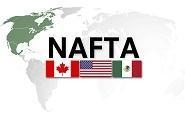Government/Policy

August 28, 2018
U.S. and Mexico Announce Bilateral Trade Deal
Written by Sandy Williams
The U.S and Mexico announced on Monday a bilateral trade deal that could replace NAFTA if Canada does not agree to terms by the end of the week.
President Trump said that he was ready to terminate NAFTA and replace it with the United States-Mexico Trade Agreement, calling the new name “elegant.”
Mexico President Enrique Peña Nieto stressed the agreement must include Canada. “It is our wish, Mr. President, that now Canada will be able to be incorporated into all of this, and I assume that they will carry out negotiations on sensitive bilateral issues between Canada and the United States,” said Nieto during a televised phone call with Trump.
Later on Monday, Mexican Foreign Affairs Secretary Luis Videgaray said that if the U.S. Trade Representative submits the bilateral agreement to Congress, it would not “preclude the possibility of Canada’s joining the agreement later.”
Trump invited Canada to re-enter trade negotiations, but warned that auto tariffs could result if a fair deal is not agreed on quickly.
“One way or another, we’ll have a deal with Canada,” Trump said. “It’ll either be a tariff on cars or it’ll be a negotiated deal. Frankly, a tariff on cars is a much easier way to go. Perhaps the other would be much better for Canada.”
The bilateral agreement contains changes to a number of controversial issues, including increasing the percentage of North American content for automobiles from 62.5 percent to 75 percent, requiring 40 percent of a Mexican built vehicle to be performed by workers earning at least $16 per hour, increasing di minimis for investment, and dropping the Chapter 19 dispute resolution measure.
Three fact sheets regarding the new bilateral agreement are listed on the website of the U.S. Trade Representative.







